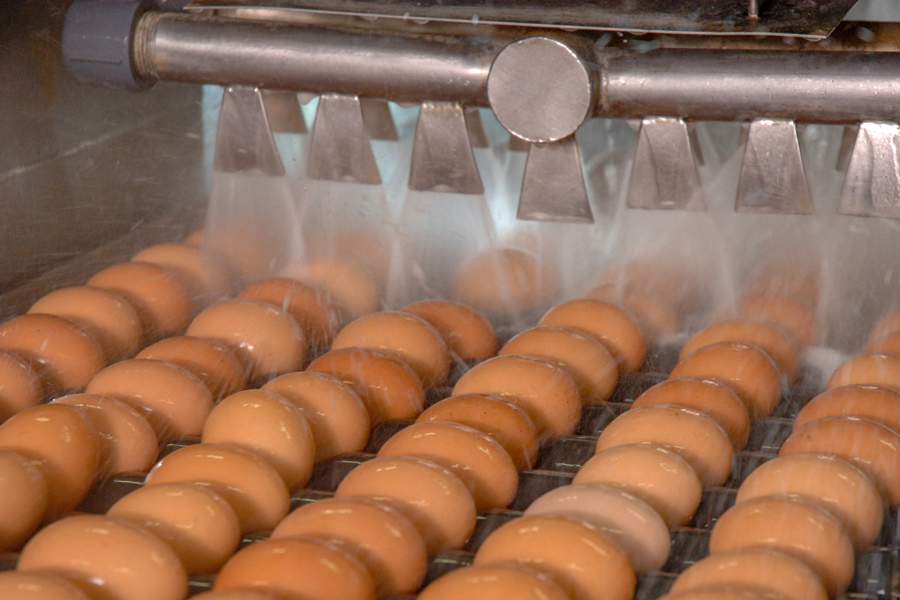Animal Production
-

Research on improving broiler housing is ongoing. Energy costs are becoming more significant to the grower’s bottom line and housing construction, equipment and operation will be paramount in helping to make sure the houses are operated as efficiently as possible. As technology and equipment is redesigned and developed, researchers will continue to examine how broiler housing can be heated, cooled, and built in such a way that modern broilers continue to reach their genetic potential using the most economical and efficient methods.
Brian Fairchild
|
-

This publication provides production and management benchmarks for Holstein herds processed by Dairy Records Management Systems. Some examples of using and applying benchmark values are provided. However, this publication should be viewed primarily as a comprehensive resource of production and management benchmark values. These benchmarks will be useful to dairy producers, dairy managers, consultants, veterinarians and agribusiness representatives as a first step in the analysis of herd management practices.
Warren Gilson, Lane Ely, Lawton Stewart, Angelica Chapa, and James Smith
|
-

This publication provides somatic cell count benchmarks for Holstein herds processed by Dairy Records Management Systems. Some examples of using and applying benchmark values are provided. However, this publication should be viewed primarily as a comprehensive resource of somatic cell count benchmark values. These benchmarks will be useful to dairy producers, dairy managers, consultants, veterinarians and agribusiness representatives as a first step in the analysis of herd management practices. Conduct a more complete analysis of herd management practices in order to pinpoint specific causes and develop solutions.
Warren Gilson, Lane Ely, Lawton Stewart, Angelica Chapa, and James Smith
|
-

B 1302
Implanting Beef Cattle
Implanting nursing calves with a growth stimulant is one of the most economically justifiable practices available in the beef industry. Implants have been shown to increase weaning weights of nursing calves in hundreds of research trials. Stocker and feedlot calves exhibit even greater responses than nursing calves. Implanting returns more revenue per dollar invested than any other management practice.
Lawton Stewart
|
-

The implementation of horn fly control measures, such as aerosols, bait, strips, foggers, dust bags, traps, oilers, ear tags, pour-ons, natural predators, and insect growth regulators is instrumental in reducing the new infection rate, while existing mastitis cases can be eliminated with antibiotic therapy. Such management practices will promote animal health and well-being, enhancing producer profits by ensuring that heifers calve with low sec and the potential for maximum milk yield.
Stephen Nickerson
|
-

Chemicals are applied to ponds and lakes to control aquatic weeds, to eliminate undesirable fish, to control undesirable insects and aquatic vertebrates, and to correct undesirable water quality problems. Pond owners are often confused by terminology, units of measure, and formulations. This publication explains how to safely and effectively use chemicals for pond management.
Gary Burtle and James Shelton
|
-

B 1045
Honey Bees and Beekeeping
Honey bees are commonly kept in artificial hives throughout the United States, and a large and sophisticated beekeeping industry provides valuable honey, beeswax and pollination services. A large section of the industry, well represented in Georgia, is devoted to mass-producing queens and bees for sale to other beekeepers.
Keith Delaplane
|
-

This publication is designed to give commercial egg processors the information they need to understand and effectively deal with the wastewater grit generated from the conveying, washing and grading of table eggs.
Casey Ritz and Brian Kiepper
|
-

The goal of this publication is to introduce the development of a more accurate measurement of water-use efficiency based on the bulk quantities of materials handled at each processing step at a poultry slaughter plant.
Brian Kiepper
|